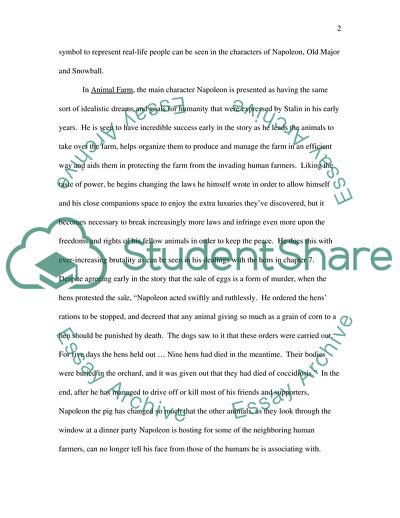Symbolism in Animal Farm Essay Example | Topics and Well Written Essays - 1500 words - 2. https://studentshare.org/literature/1708666-textual-analysis
Symbolism in Animal Farm Essay Example | Topics and Well Written Essays - 1500 Words - 2. https://studentshare.org/literature/1708666-textual-analysis.


